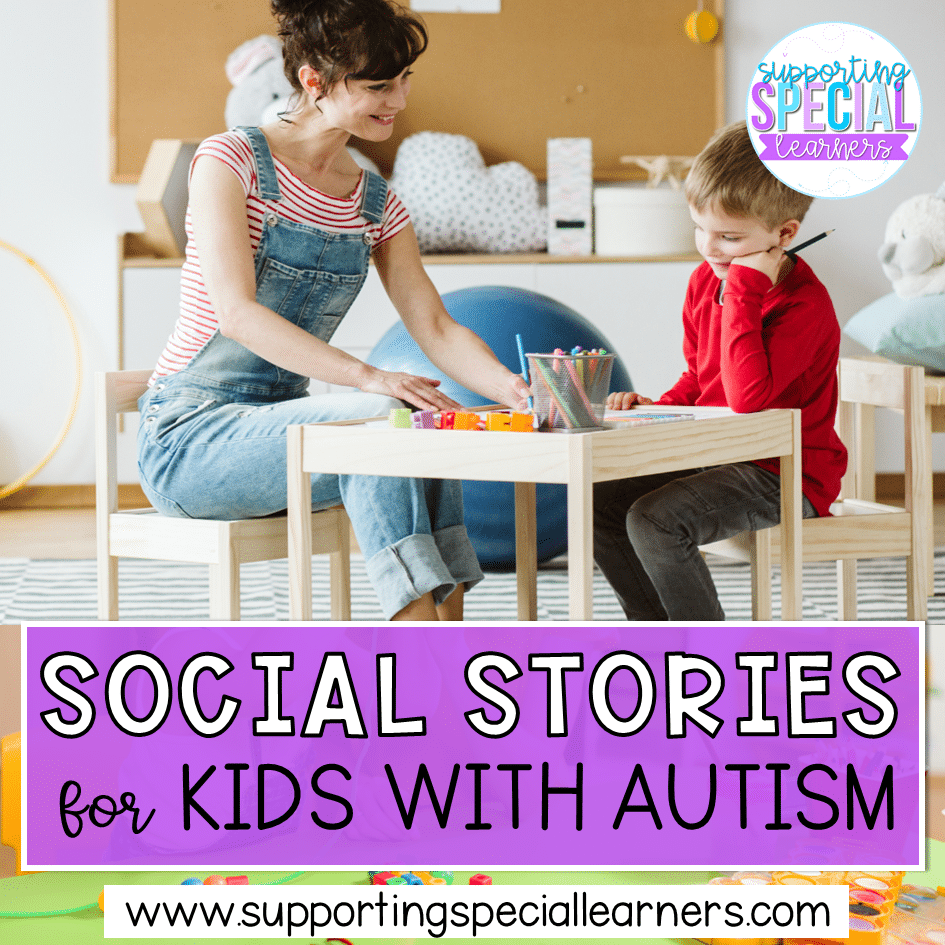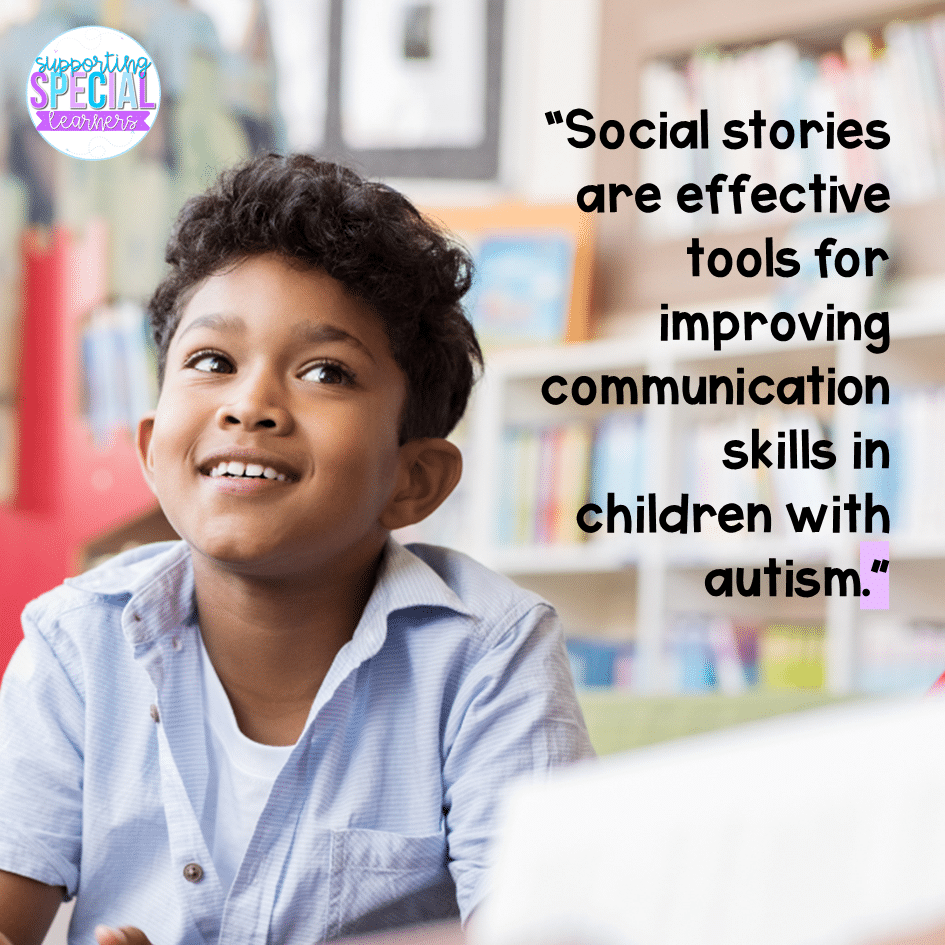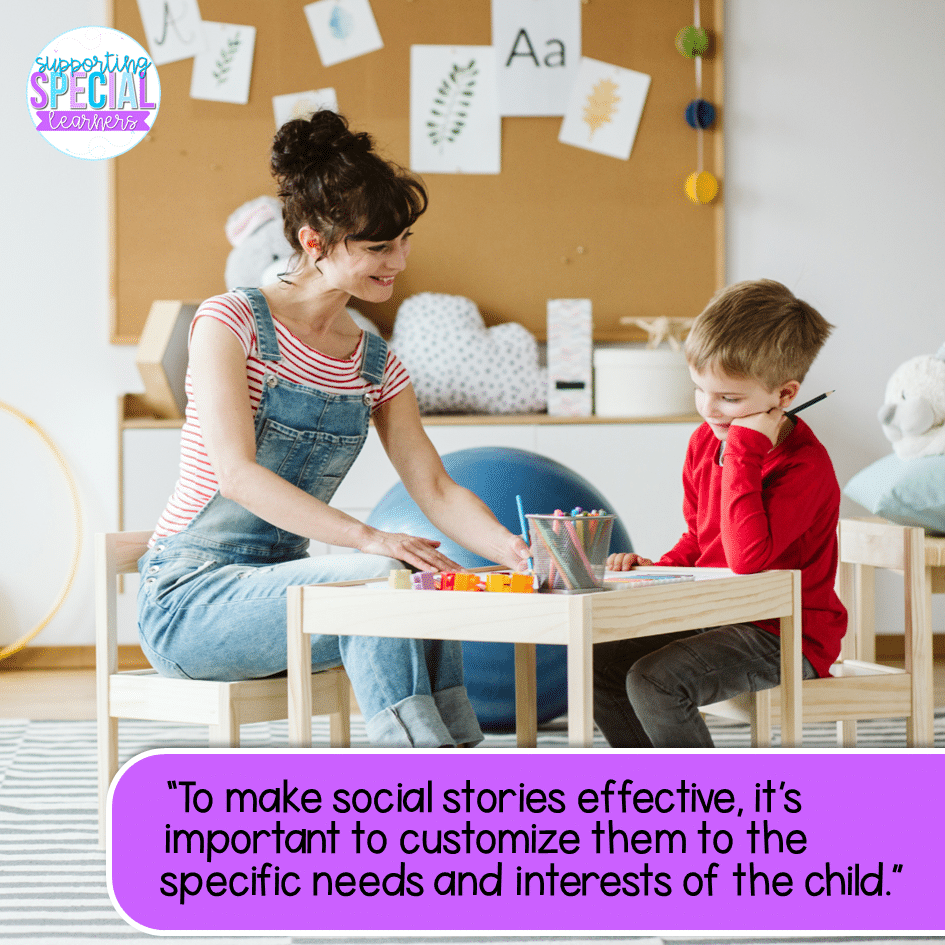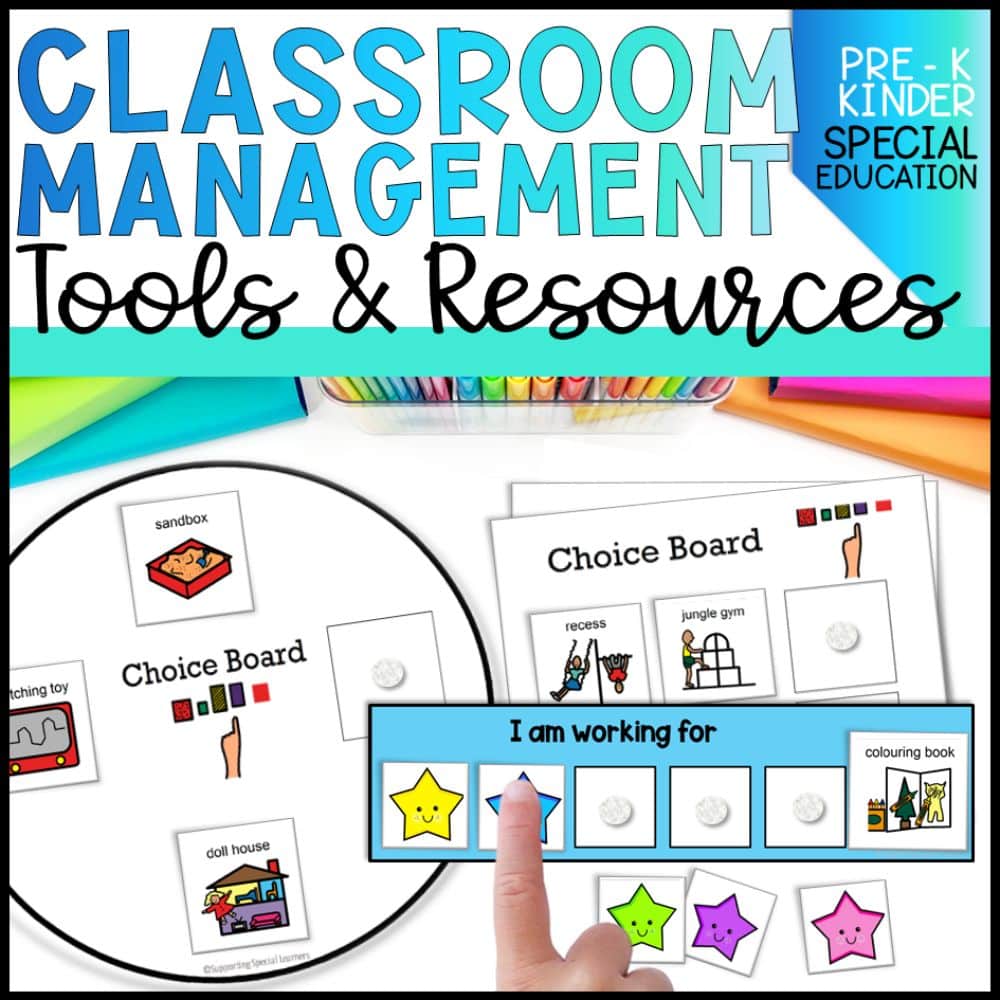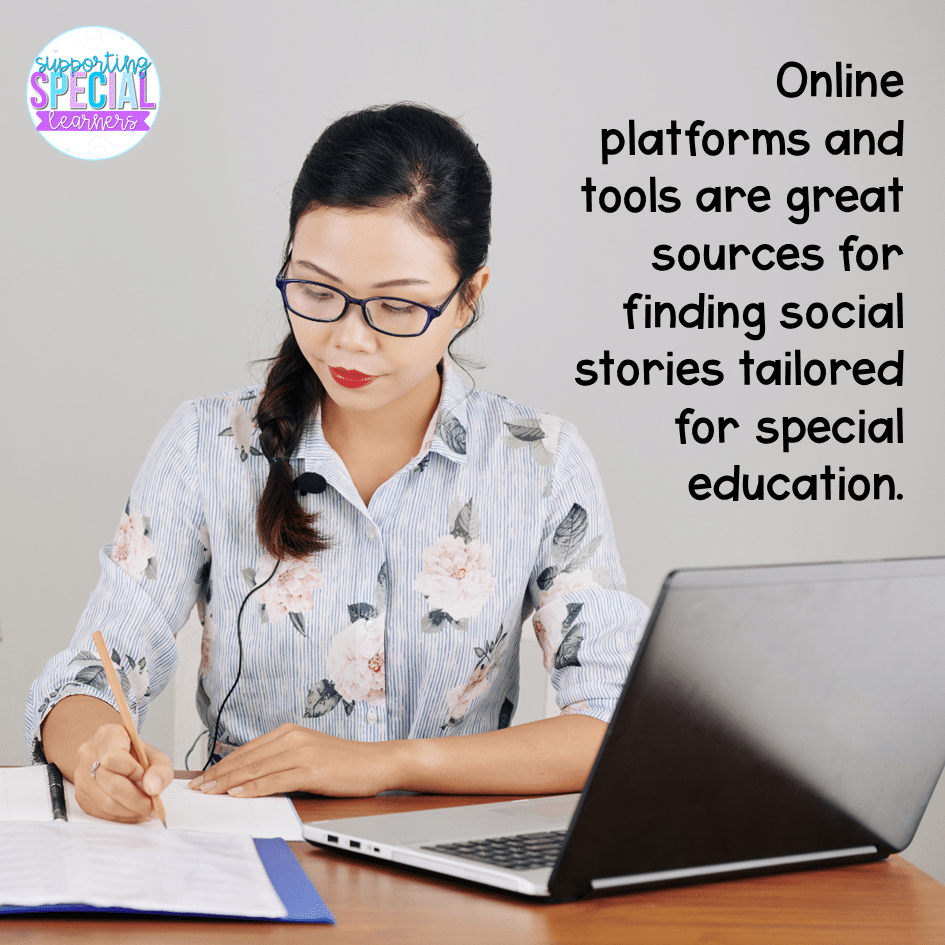- Understanding Social Stories for Autism
- Benefits of Social Stories for Autistic Children
- Creating Effective Social Stories
- Implementing Social Stories at Home and School
- Examples of Social Stories for Various Situations
- Resources for Finding and Creating Social Stories
- Conclusion
- Frequently Asked Questions
Social stories help kids with autism navigate daily life more effectively. These stories break down social situations into simple, understandable steps, making it easier for children with autism to grasp what to expect and how to behave. Created by Carol Gray in 1990, social stories have evolved to become an essential resource for parents, educators, and therapists. This article will explore the benefits, creation, and implementation of social stories, providing valuable insights for those looking to support children with autism.
Key Takeaways
- Social stories simplify complex social situations, making them easier for children with autism to understand.
- These stories help reduce anxiety by preparing children for what to expect in various scenarios.
- Social stories can improve communication skills by teaching children how to respond appropriately in social settings.
- Creating effective social stories involves tailoring them to the child’s individual needs and using visual aids.
- Consistent use of social stories at home and school can lead to better social interactions and overall well-being for autistic children.
Understanding Social Stories for Autism
What Are Social Stories?
Social stories are short, simple narratives to help children with autism understand and navigate social situations. They break down complex social interactions into manageable steps, making it easier for kids to grasp what is expected of them. These stories often include details about the setting, the people involved, and the actions or behaviors that are typically expected.
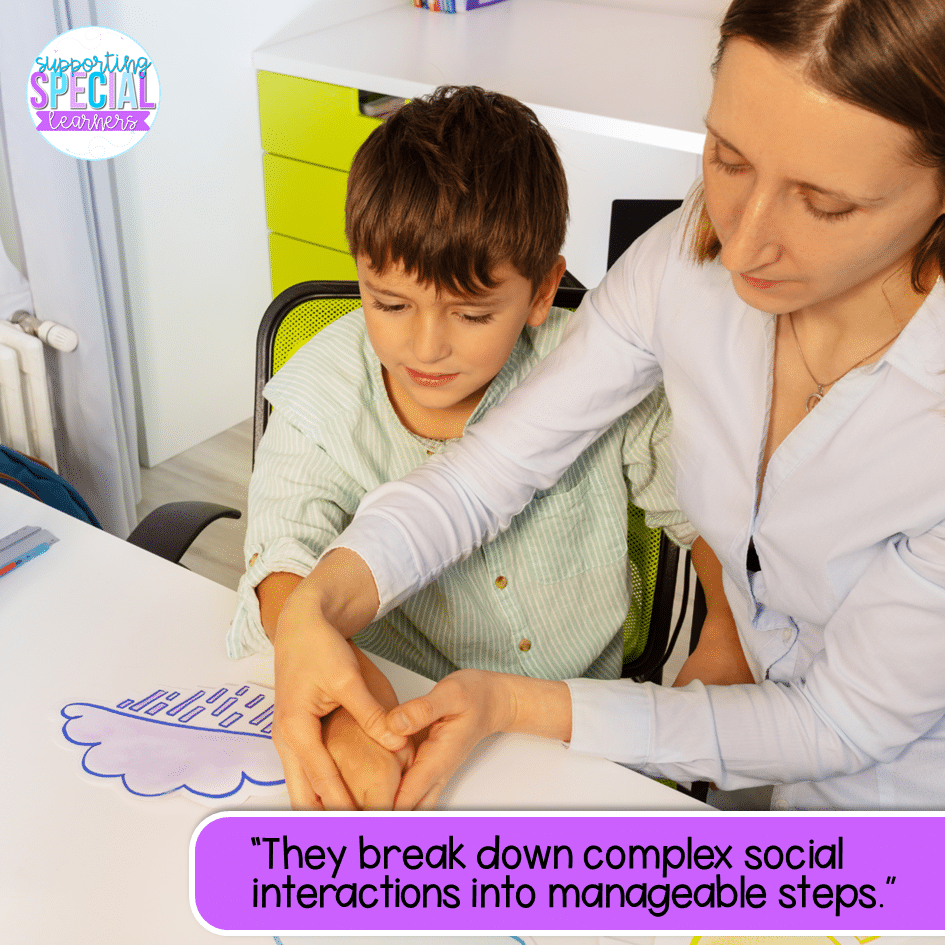
The Origin of Social Stories
The concept of social stories was developed by Carol Gray in 1990. She created these stories to help her autistic students prepare for various school-based situations. Over the years, Gray refined her approach and even patented the term “social stories.” Today, many educators and parents use her method to support children with autism.
Key Elements of Social Stories
Social stories typically include the following key elements:
- Clear and simple language: The language used should be appropriate for the child’s comprehension level.
- Visual aids: Pictures, icons, or symbols can enhance understanding and engagement.
- Focus on strengths: Highlighting the child’s abilities and reinforcing positive behaviors.
- Concise information: Avoiding unnecessary details to keep the story focused and easy to understand.
Social stories are a powerful tool for helping children with autism navigate social situations and develop important social skills.
Benefits of Social Stories for Autistic Children
Social stories offer numerous advantages for children with autism, helping them navigate social interactions and daily routines. Here are some key benefits:
Enhancing Communication Skills
Social stories are effective tools for improving communication skills in children with autism. By breaking down social situations into simple, understandable steps, these stories help children grasp abstract concepts and social cues. This leads to better interactions and clearer expression of thoughts and feelings.
Reducing Anxiety and Stress
One of the significant benefits of social stories is their ability to reduce anxiety and stress. By detailing what to expect in various situations, social stories provide a sense of predictability and security. This can be especially helpful for children who might feel overwhelmed by new or unfamiliar environments.
Improving Social Interactions
Social stories also play a crucial role in enhancing social interactions. They offer a roadmap for appropriate behaviors and responses, making it easier for children to engage with peers and adults. Over time, this can lead to increased social confidence and better relationships.
Creating Effective Social Stories
Tailoring Stories to Individual Needs
To make social stories effective, it’s important to customize them to the specific needs and interests of the child. This means considering their age, attention span, and level of understanding. By doing this, the story becomes more meaningful and relatable. Gather information about the child, such as their interests and abilities, to create a story that truly resonates with them.
Using Visual Aids and Illustrations
Visual aids like pictures, symbols, or drawings can greatly enhance a social story. These visuals help in making the story more engaging and easier to understand. For children who have difficulty reading, using age-appropriate photographs or picture symbols can be very helpful. Visuals provide additional cues and support comprehension, making the story more effective.
Incorporating Positive Reinforcement
Positive reinforcement is a key element in social stories. Highlight the child’s strengths and abilities within the story. This not only boosts their confidence but also encourages positive behavior. Use a positive and optimistic tone throughout the story to guide the child towards appropriate behavior and positive outcomes. Regularly review the story with the child to reinforce understanding and promote the development of important social skills.
Implementing Social Stories at Home and School
Social stories can be a powerful tool for helping children with autism navigate their daily lives. By using these stories both at home and in school, we can provide consistent support and reinforcement.
Using Social Stories in Daily Routines
Implementing social stories at home offers a valuable chance for parents and caregivers to assist children with autism in various social scenarios. Here are some key steps:
- Identify Target Situations: Determine specific social situations the child may face at home, such as daily routines, family gatherings, or outings.
- Develop Relevant Social Stories: Create stories that address these situations, ensuring they are personalized to the child’s needs and abilities. Use clear language and visual aids to enhance understanding.
- Read and Discuss: Read the stories together and discuss them. Encourage the child to ask questions and engage with the content.
- Reinforce Learning: Consistently practice the concepts from the stories and use positive reinforcement to encourage the child to apply what they’ve learned.
Collaborating with Educators and Therapists
Social stories can also be effectively used in school settings to support students with autism. Here’s how:
- Collaborate with Educators: Work closely with teachers and special education professionals to identify challenging social situations for the student. This ensures the stories are relevant and aligned with educational goals.
- Create School-based Stories: Develop stories focusing on school-specific scenarios, such as transitioning between classes or participating in group activities. Tailor these stories to the student’s individual needs.
- Integrate into Curriculum: Incorporate social stories into the student’s daily routine and curriculum. This can include reading and discussing the stories as a class and using visual aids to reinforce concepts.
- Promote Generalization: Encourage students to apply the skills learned from social stories to various social situations within the school environment. Provide guidance and feedback to support this process.
Monitoring and Adjusting Stories Over Time
To ensure the effectiveness of social stories, it’s important to monitor and adjust them as needed:
- Regular Review: Periodically review the social stories with the child to reinforce understanding and ensure they remain relevant.
- Adjust for Growth: As the child grows and their needs change, update the stories to reflect new challenges and situations.
- Feedback Loop: Maintain open communication with educators and therapists to gather feedback and make necessary adjustments.
By implementing social stories at home and in school, children with autism can develop essential social skills and gain confidence in navigating social interactions. Personalized social stories help them understand and manage various situations, leading to better communication and social success.
Examples of Social Stories for Various Situations
Social stories can be incredibly helpful for children with autism, especially when they face new or challenging situations. Here are some examples of social stories tailored to various scenarios.
Handling Transitions and Changes
Transitions can be tough for children with autism. Social stories can help by explaining what to expect during a change. For example, a story about moving from one classroom to another might include details about the new classroom, the teacher, and the activities that will take place there. Visual aids and behavior supports can be particularly useful in these stories to help children understand and manage transitions.
Managing Emotions and Behaviors
Children with autism often struggle with understanding and managing their emotions. Social stories can provide clear guidelines on how to handle feelings like anger, sadness, or excitement. For instance, a story about dealing with anger might explain that it’s okay to feel angry but not okay to hit others. It could offer alternative actions like taking deep breaths or using a stress ball. Classroom behavior management visuals can also be included to reinforce these concepts.
Navigating Social Settings
Social interactions can be confusing for children with autism. Social stories can break down common social situations, such as making friends or taking turns, into simple, understandable steps. A story about making friends might include tips on how to start a conversation, share toys, or ask to join a game. These stories often use straightforward language and clear visuals to make the social rules easier to grasp.
Social stories help children with autism navigate daily life. By providing clear, concrete examples, these stories can make challenging situations more manageable and less stressful.
Resources for Finding and Creating Social Stories
Online Platforms and Tools
There are several online platforms that offer digital resources tailored for special education, focusing on students with autism. These platforms provide a variety of materials, including adapted books, task cards, and differentiated resources to cater to diverse needs.
Books and Publications
Books and publications are valuable resources for finding and creating social stories. They offer insights, examples, and guidelines for developing effective social stories. Some recommended books include:
- “The New Social Story Book” by Carol Gray: A comprehensive guide that includes numerous social stories and tips for creating your own.
- “Social Stories for Kids with Autism” by Angela Conrad: This book provides practical advice and examples of social stories for various situations.
- “Building Social Relationships” by Scott Bellini: A book that offers strategies for developing social skills, including the use of social stories.
Professional Guidance and Support
Seeking professional guidance can be beneficial when creating social stories. Professionals such as special education teachers, speech therapists, and occupational therapists can provide valuable insights and support. They can help tailor social stories to meet the individual needs of the child and ensure they are effective. Additionally, joining a community dedicated to fostering inclusive education can provide ongoing support and resources.
Collaborating with professionals and joining supportive communities can enhance the effectiveness of social stories and promote inclusive education.
By utilizing these resources, parents and educators can create meaningful and effective social stories that support the development of social skills in children with autism.
Looking for tools to help create and find social stories? Our website offers resources that can make this task easier for you. From adapted books to task cards, we have everything you need to support special learners. Visit us today to explore our collections and find the perfect materials for your needs.
Conclusion
In conclusion, social stories support kids with autism in managing daily life successfully. By breaking down social situations into simple, understandable steps, these stories can reduce anxiety and improve behavior. They help children understand what to expect and how to react, making new experiences less overwhelming. Whether used at home, in school, or in the community, social stories can make a significant difference in the lives of autistic children, promoting independence and enhancing their social skills. With thoughtful planning and regular practice, parents and educators can use social stories to support the unique needs of each child, fostering a more inclusive and understanding environment.
Frequently Asked Questions
What are social stories?
Social stories are short, simple stories that explain social situations to children with autism. They help kids understand what to expect and how to behave in different scenarios.
Who created social stories?
Social stories were created by Carol Gray in 1990. She developed them to help autistic children navigate social situations more easily.
How do social stories benefit children with autism?
Social stories can improve communication skills, reduce anxiety, and help kids understand and manage social interactions better.
Can I create my own social stories?
Yes, you can create your own social stories. Just make sure they are tailored to the child’s needs and include clear, simple language and visuals.
Where can I find resources for social stories?
There are many online platforms, books, and professional resources available for finding and creating social stories. Websites like ABA Resources offer free templates and examples.
How should I use social stories with my child?
You can read social stories with your child before the situation they describe occurs. This helps prepare them for what to expect and how to behave.

